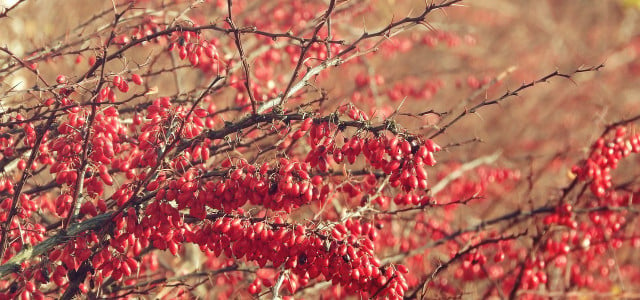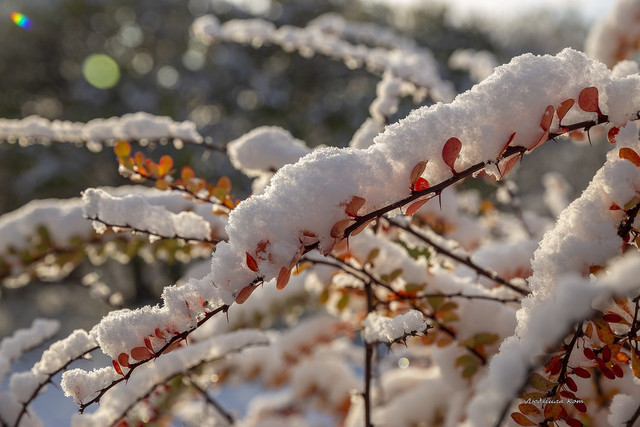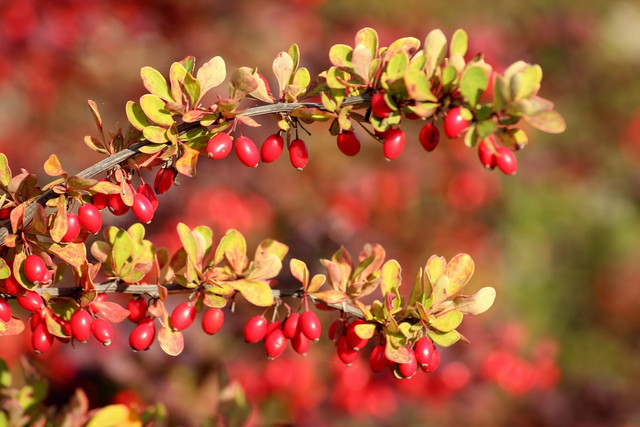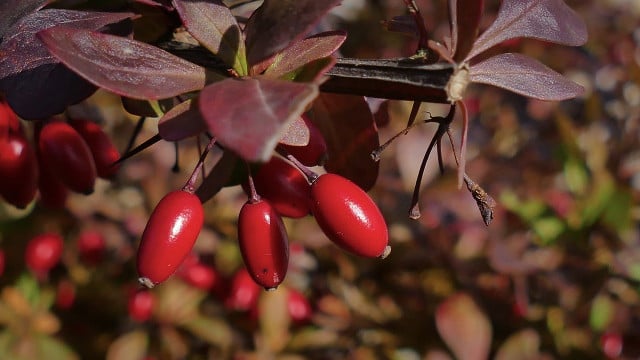
Barberry is a popular hedge plant because it is extremely hardy and frost-resistant. In this article you will learn how to properly plant and care for a barberry hedge or shrub.
Barberry is also known to many amateur gardeners as sour thorn. The thorny plant with the densely growing, mostly dark green leaves is particularly suitable if you are looking for a hedge for your natural garden. The yellowish flowers are readily flown to by insects, while the red to purple berries are popular with birds. So if you’re looking to create a bird- and insect-friendly garden, a barberry hedge is just what you need.
Contents
Plant barberry: Choosing the right variety

If you want to plant a barberry as a shrub or hedge, you should first decide whether you want a deciduous or an evergreen plant. Evergreen hedges have the advantage of providing you with a natural privacy screen even in winter. Depending on the variety, barberry’s foliage color, flowering time and growth will also vary.
Popular barberry species that have proven successful in the European climate are:
- Berberis candidula is also known as evergreen cushion barberry and makes a good hedge plant. Since it doesn’t grow too tall, you can use it especially well to create small hedges that keep their green throughout the winter.
- Berberis vulgaris is the only species of barberry native to Europe and is also called common barberry. It blooms from May to June and bears orange fruits in the fall. In winter, this species sheds its foliage.
- Berberis julianae belongs to the evergreen barberry family and bears larger, oval leaves. The blue fruits that develop from the yellow flowers that bloom in May and June are especially pretty.
- Berberis thunbergii grows particularly densely, making it the ideal hedge plant. Although it sheds its foliage in winter, you can enjoy the colorful foliage of this barberry in autumn. You can also get plants with red or bright yellow leaves of this variety in garden stores.
Planting barberry: how to do it right

No matter which species you choose for your barberry hedge, you always proceed in the same way when planting barberry. To ensure that the thorny plant grows quickly, you should observe the following tips:
- The right location: Barberry feels most comfortable in a semi-shady to sunny spot in your garden. Evergreen varieties should be protected from strong sunlight, as this can damage the leaves in winter. Barberry shrubs and hedges look especially beautiful in front of fences or walls.
- The right soil: Barberry needs a well-drained, loose soil that can be slightly acidic. You can recognize acidic soil by special indicator plants, such as the daisy or heather. But barberry hedges also do well with calcareous soil. You should just make sure that the soil at the site is not too moist.
- Underplanting: Ground cover roses can be combined well with a barberry hedge as underplanting. You can also plant early bloomers such as crocuses, tulips or daffodils in front of evergreen barberry.
- Plant barberry: You can buy barberry as a young shrub in a planting container at nurseries and garden supply stores. Evergreen barberries are best planted in the spring, while the best time to plant deciduous varieties is in the fall.
Clear the barberry’s future location of weeds and old roots.
- Place the potted root balls in a bucket of water. When no more air bubbles come to the surface of the water, the young plant is sufficiently watered.
- Now dig the planting holes. They should be about twice as wide as the root balls of the barberry plants. Depending on the variety, you may need to consider a different planting distance.
- Mix the excavated planting soil with some compost and horn shavings. This way the barberries get enough nutrients from the beginning.
- Pour out the barberry and place it in the center of the planting hole.
- Now fill the hole again with the planting soil and press the substrate lightly.
- Finally, water the barberry generously.
Care barberry hedge properly

Barberry is so popular as a hedge plant because it is very low maintenance. With the following tips, you can ensure that your barberry hedge grows quickly and densely:
- Watering: Occasional downpours are usually enough to keep the barberry watered. You only need to water the hedges and shrubs additionally during long dry periods. To keep the soil evenly moist, you can apply a layer of mulch to the soil when you plant the barberry. This will also save you from weeding, as mulching suppresses wild growth.
- Fertilizing: As a rule, you don’t need to fertilize barberry. It is sufficient if you already add some compost or organic fertilizer to the planting soil.
- Pruning: When planting small shrubs, shorten the shoots by about a third or even half. This will ensure that the branches will branch out better later on. Otherwise, you do not need to prune barberry hedges any further. Only bulky hedges can be pruned slightly. In general, barberry is very tolerant of pruning.
- Diseases and pests: Evergreen barberries are almost never affected by diseases. From time to time, however, they can be gnawed on by the barberry weevil. The best way to control this beetle is to use nematodes or to encourage its natural predators. Deciduous barberry species suffer more often from powdery mildew. In this case, collect all infested leaves and spray the plant with a broth of field horsetail.
- Did you know? The fruits of the common barberry (Berberis vulgaris) are edible and contain lots of vitamin C. You can use the sour-tasting berries to make jam or juice, for example. However, only use the fruits of the barberry vulgaris, the berries of other varieties are considered slightly poisonous.

